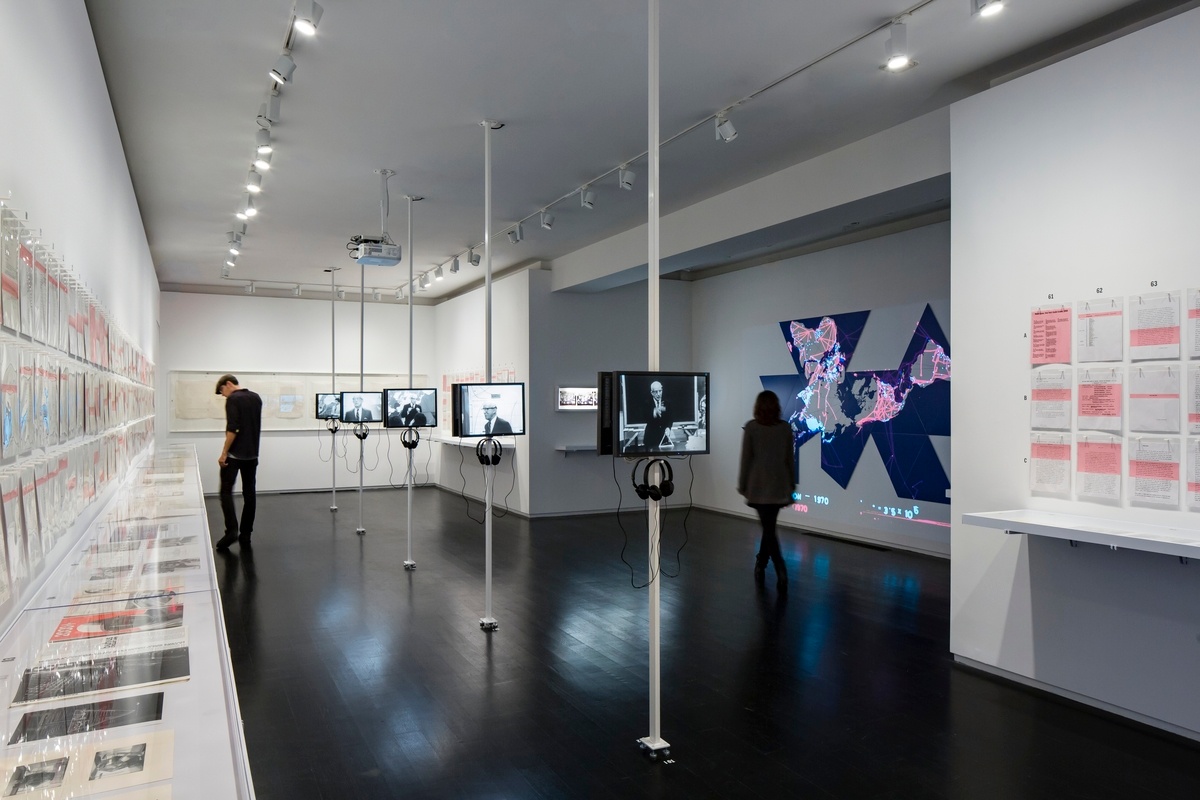Initially proposed for the US Pavilion at Expo 67 in Montreal, Buckminster Fuller’s World Game was played for the first time in 1969 at the New York Studio School for Drawing, Painting, and Sculpture. Over the next decade the World Game evolved and expanded through workshops, seminars, strategy papers, and building designs. Emerging from Fuller and John McHale’s World Resources Inventory, the World Design Science Decade enterprise, and Fuller’s Geoscope, the World Game became increasingly central to Fuller’s research at the University of Southern Illinois and the University of Pennsylvania. Across its different manifestations the World Game remained focused on the goals of overcoming energy scarcity and altering conventional territorial politics through the redistribution of world resources. This anti-Malthusian, anti-war game was meant to discover conditions for perpetual ecological peace and to usher in a new era of total global resource consciousness.
Mirroring cold war command and control infrastructures, proposals for World Game centers described a vast computerized network that could process, map, and visualize environmental information drawn from, among other sources, Russian and American spy satellites. Fuller claimed that their optical sensors and thermographic scanners could detect the location and quantity of water, grain, metals, livestock, human populations, or any other conceivable form of energy. Among Fuller’s obsessions was the limited range of the electromagnetic spectrum available to human vision. Fuller argued that the World Game would serve as a corrective to this limitation by rendering visible global environmental data patterns that evaded normal perception.
Despite Fuller’s plans for a photogenic, televisual, and cybernetic form of mass participation, through Fuller’s life the World Game remained largely speculative and pedagogical. It appeared primarily through copious research reports, resource studies and ephemeral workshops. The exhibition tracks this textual dimension by assembling documents related to various instances of the World Game conceived, proposed and played from 1964 to 1982. It examines the World Game as a system for environmental information and as a process of resource administration. Stressing the role of the World Game as an experimental pedagogical project the exhibition screens all ten reels of the film R.Buckminster Fuller: The World Game, directed by Herbert Matter and shot at the 1969 New York workshop.
























